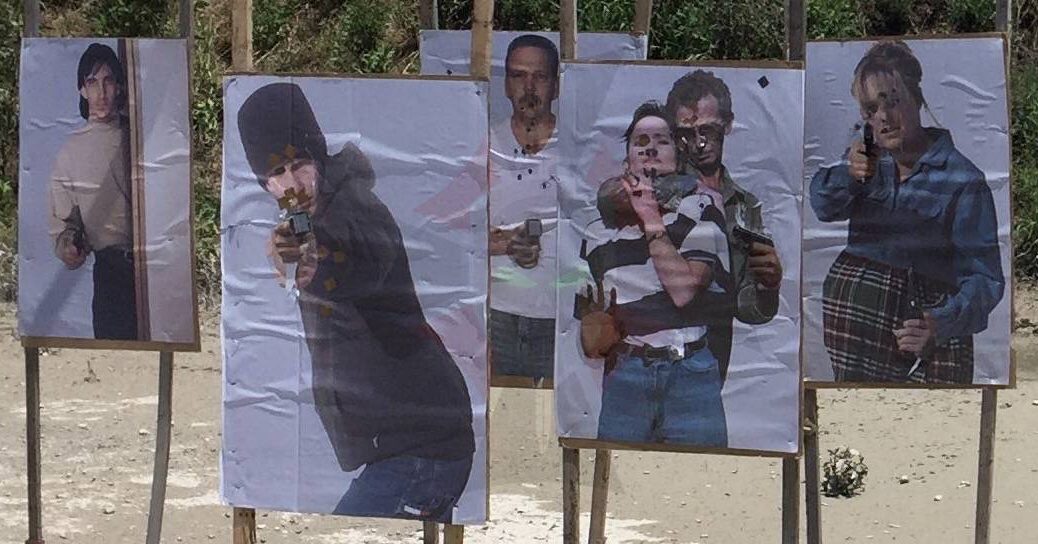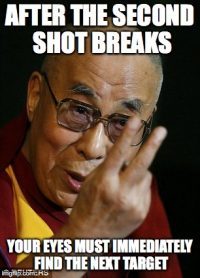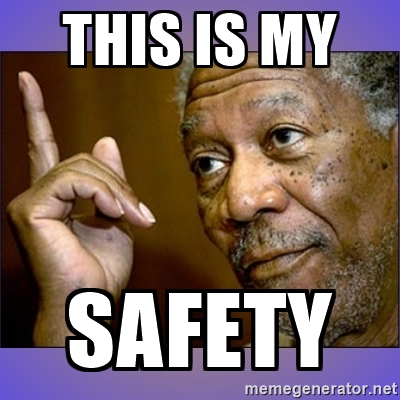Speed Without Thought
What comes to your mind when you think about a day on the range?
For many, it is the sound of Pro-Timers and shaving seconds off splits and reloads. Often it is running drills that are commonly found in a competition on IPSC cardboard targets or steel. The thought of burning down a drill that can be posted on YouTube for others to admire.
But what are you training?
What is your goal? What is your end-state? And are you actually improving your real world performance?
The End-State
It may sound counter-intuitive, but to know where to start, we have to know where to end. That is to say, not where our training stops- we should be constantly improving our skills. The end (or end-state) is what we are preparing for. It may be competition shooting, it may be hunting, or it may be self-defense. While some of these end-states may share similar skills, their application and focus may vary. Some of these end-states require more separate skills than others.
Training Methodology
Let me be clear- competition training can help in developing skills, AS LONG AS YOU MOVE ON. Fundamentally, there is one main difference between competition shooting and real world engagements. TARGET DISCRIMINATION. In most competitions, simple shoot/ no shoot targets are used by either reversing white and brown sides of IPSC targets or by spray painting hand outlines on them. In the real world, it is not so simple. Before pulling a trigger, we must decide if we SHOULD pull the trigger. Often the situations we find ourselves in when faced with a real world use of force scenario are not cut and dry. They may not be clean and they may not be obvious good guy vs bad guy. There are many shades of gray. You must have a thought process driving actions.
The thought process is one of the most difficult skills to train and many prospective elite military operators struggle with it. In order to decide to shoot the threat, we must first identify the presence of a threat through proper scanning/clearing, we must then discriminate the threat (a process I do not discuss on the internet). Once we confirm it is a threat we must locate the proper round placement (another topic I do not elaborate on the internet), then we must identify if a holdover is appropriate. This is the main difference between competition vs real world, and it is a huge one. But why is this an important distinction? Can’t a competition shooter easily move on to this task?
Yes, and No. One of our constant struggles in shooting is managing our mental bandwidth. We have a finite amount of information we can process all at once. The less we are used to performing a task, the more we will have to focus on it and the more mental bandwidth we will use. This leaves less room to process other pieces of information and tasks. Speed affects our bandwidth as well. The faster we move, the faster we have to process multiple tasks. Now we mitigate this by getting used to performing tasks. TEACHING our brains how we want to process data, teaching it the correlation between what we SEE and what we want to DO.
What does this mean for the competition shooter? Hypothetically: if you are drilling say a steel challenge and we have you start facing away from the steel. We have you run the drill over and over again until you are shaving just 1/10’s of a second off your time. Then without you knowing, we move the targets around and change them- then initiate the drill again. What happens? The chances are pretty good that you instantly enter sensory overload. Why is that? Because you were not moving at a speed where you can THINK, and rightly so because it wasn’t necessary for your drill. This is where the rub is because the shooter has stayed at one level in the progression to real world training – they have become USED to moving fast. Once you are used to moving fast, it can be very difficult to force yourself to slow down.
I see this frequently in my Close Quarters Marksmanship courses with shooters that are competitive and have attended many professional shooting training courses. Often these shooters get their sights to the target very fast and their body is ready to take the shot immediately- however, their mind is not done with its tactical shooting tasks. In many ways the body and mind start fighting each other in a “I’m ready- No I’m not” argument that can often be visually observed. This results in not following the proper process and losing efficiency, shooting a no-threat target, or failing to engage a threat target. A good football analogy might be a quarterback who trains hard to take snaps, drop back and throw at a stationary target. He trains until he can perform the tasks perfectly and quickly. We then throw him in a real game with a full defensive backfield and we run 3 receivers. How do you think he does? I would propose that he does just as well as the speed shooter who is suddenly thrown into a scenario that requires a level of tactical shooting discrimination that he hasn’t trained for.
Summary
What I am saying here is that we need to have a layered approach to our training, especially in tactical shooting. We need to make sure that we don’t linger at individual layers, unnecessarily. Once we can mentally cope with one layer and can perform it efficiently- we need to move on to the next. If it is too much, we move down a layer and then move back up when we are able to. Staying at one layer for weeks, months, or even years just to gain Pro-Timer progress does not efficiently progress us towards our goals. Simple efficiency is your goal at each layer. If you can perform the task smoothly and efficiently- MOVE ON. Once you reach the level of performing all of your tasks in the layered process in the most complex and complicated scenario within your end-state, and can do it smoothly and efficiently- THAT is the time to focus on doing things faster. Why? Because now you will know how you have to move and think at your end-state. You will understand how all the layers apply and will know what is important and what is not. You will know where you can push things and where it could be detrimental. You will not waste time focusing on something where you should be focusing on something else. You have to know where you end to know where to begin.




